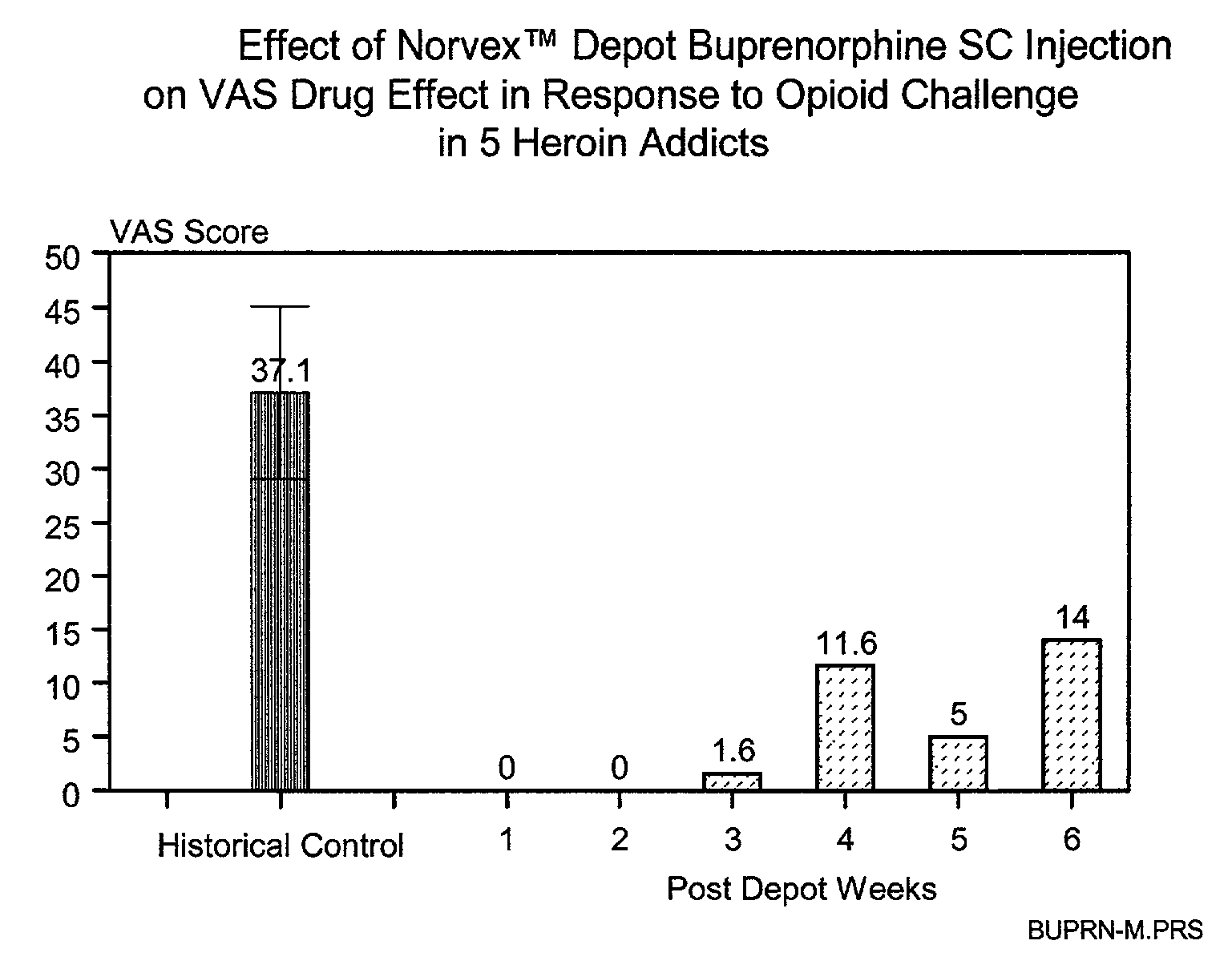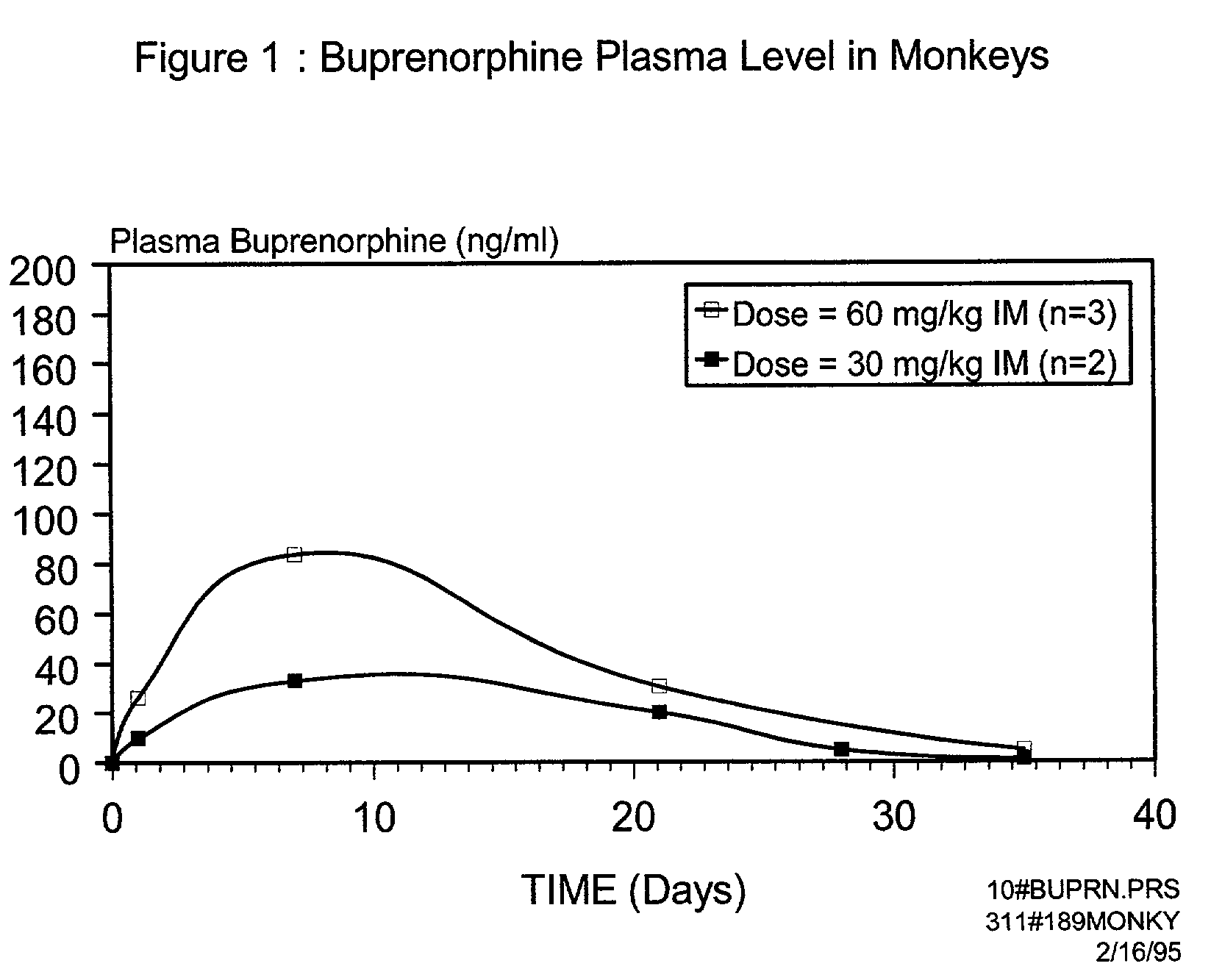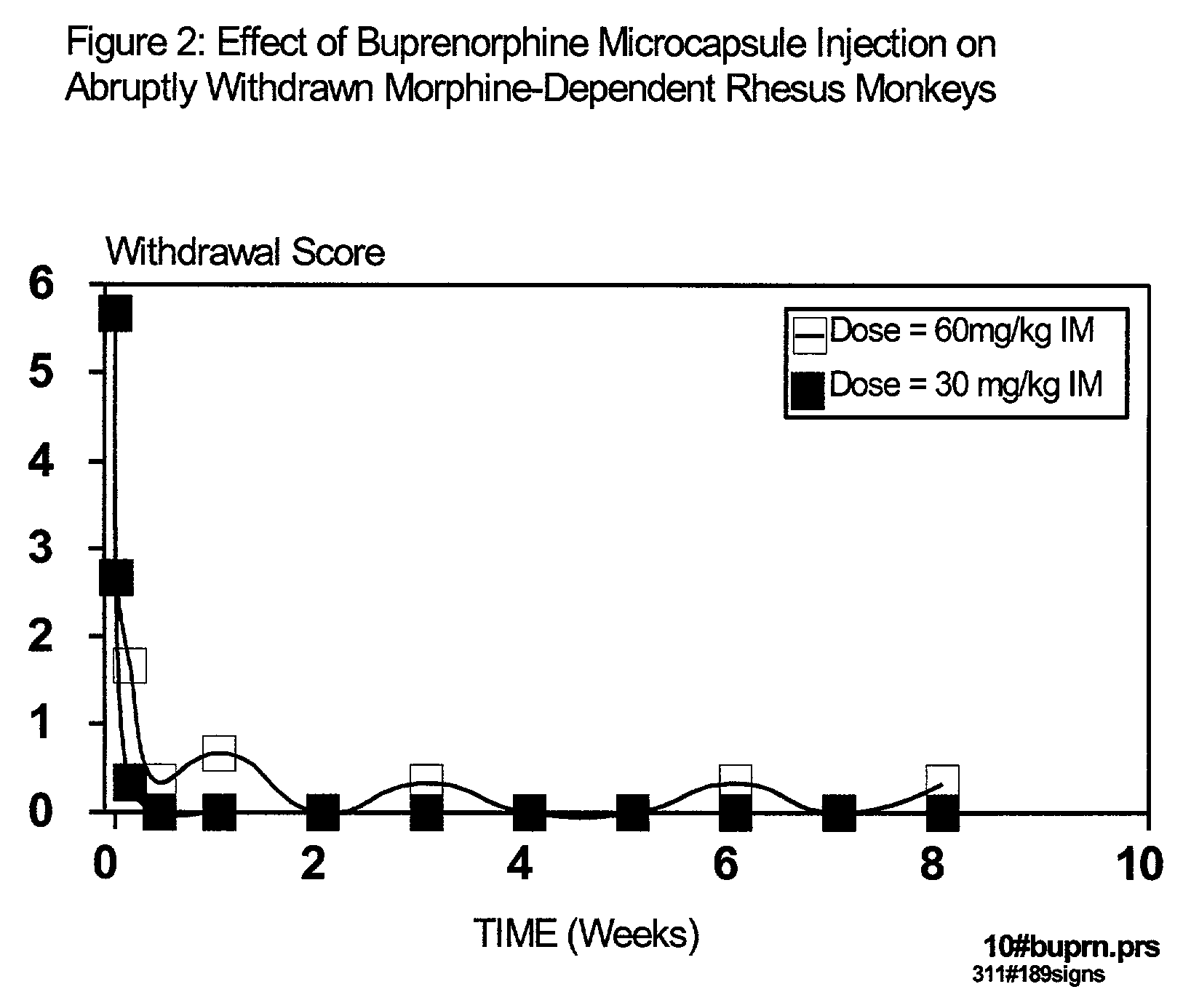High drug loaded injectable microparticle compositions and methods of treating opioid drug dependence
a high-drug, injectable technology, applied in the field of addiction, can solve the problems of large volume of injectable formulations, inability to promote psychological and physical independence, and difficulty in weaning from orally administered methadone, so as to reduce the amount of opioids, reduce the amount of drugs, and reduce the effect of withdrawal symptoms
- Summary
- Abstract
- Description
- Claims
- Application Information
AI Technical Summary
Benefits of technology
Problems solved by technology
Method used
Image
Examples
example i
Selection of a Pharmacologically Active Ingredient
[0020]The microparticles of the present invention contain a pharmacologically active ingredient including one or more opioid agonists, partial opioid agonists, one or more opioid antagonists, or combinations thereof. Opioid agonists mimic the effect of the opioid drug on which the addicted individual depends. Agonists which have been used in detoxification and maintenance therapies for drug addiction include methadone, buprenorphine and hydromorphone. Opioid antagonists include naltrexone, naloxone, and, at certain concentrations, buprenorphine, which bind mu, delta and / or kappa opioid receptors in the brain, thereby blocking the ability to experience the characteristic euphoria and other psychostimulant effects of opioids.
[0021]The major therapeutic uses of methadone are for analgesia and for treatment of opioid addicts (Jaffe et al., page 491, In Pharmacological Basis of Therapeutics (7th edition), (Gilman et al. eds.) (Macmillan, ...
example ii
Selection of the Target Profile of Active Ingredient Delivery
[0028]According to the present invention, the microparticles include an active ingredient, such as buprenorphine, and a biodegradable polymer. The microparticles can be injected into an individual as a depot dose, using a convenient volume. The microparticles are designed to achieve a gradual release of the active ingredient over time. It is a characteristic of the invention that the rate of active ingredient delivered, and the duration of such delivery determine the outcome of treatment, such as achieving opioid independence. According to one aspect of the present invention, the active ingredient is delivered initially at a rate such that the addict does not experience extensive peaks of euphoria, yet sufficient agonist activity is present to prevent unpleasant opioid craving. According to an additional embodiment of the present invention, the active ingredient is delivered at a rate sufficient to reduce consumption of th...
example iii
Microparticle Preparation
[0031]Microparticles according to the present invention include one or more biodegradable polymer or copolymer materials and a pharmacologically active ingredient that constitutes greater than 50%, 60%, 70%, 75%, 80%, 85% or greater by weight of the microparticle. Alternatively, the active ingredient constitutes between 50% and 85%, preferably between 50% and 75% by weight of the microparticle. When the pharmacologically active agent is present in the microparticle at such percents by weight, the present invention allows one to prepare a dose formulation including sufficient active ingredient to treat drug addicted individuals over an extended period of time equal to known treatment periods to reduce opioid consumption.
[0032]The microparticles generally have a diameter within a range of between about 20 μm and about 200 μm, between about 50 μm and about 150 μm and preferably between about 40 μm and about 90 μm. The particles are preferably less than about 15...
PUM
| Property | Measurement | Unit |
|---|---|---|
| body weight | aaaaa | aaaaa |
| body weight | aaaaa | aaaaa |
| diameter | aaaaa | aaaaa |
Abstract
Description
Claims
Application Information
 Login to View More
Login to View More - R&D
- Intellectual Property
- Life Sciences
- Materials
- Tech Scout
- Unparalleled Data Quality
- Higher Quality Content
- 60% Fewer Hallucinations
Browse by: Latest US Patents, China's latest patents, Technical Efficacy Thesaurus, Application Domain, Technology Topic, Popular Technical Reports.
© 2025 PatSnap. All rights reserved.Legal|Privacy policy|Modern Slavery Act Transparency Statement|Sitemap|About US| Contact US: help@patsnap.com



